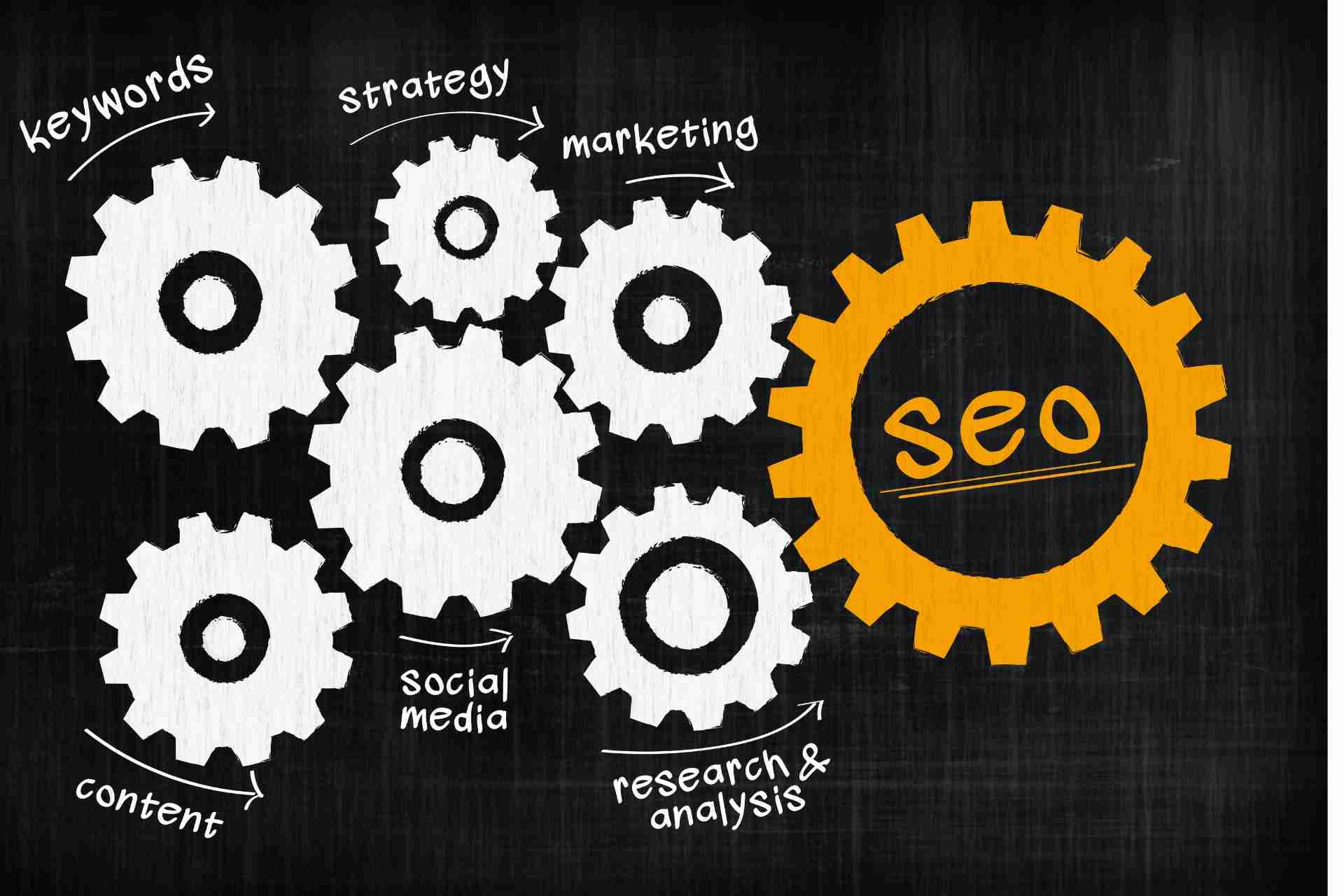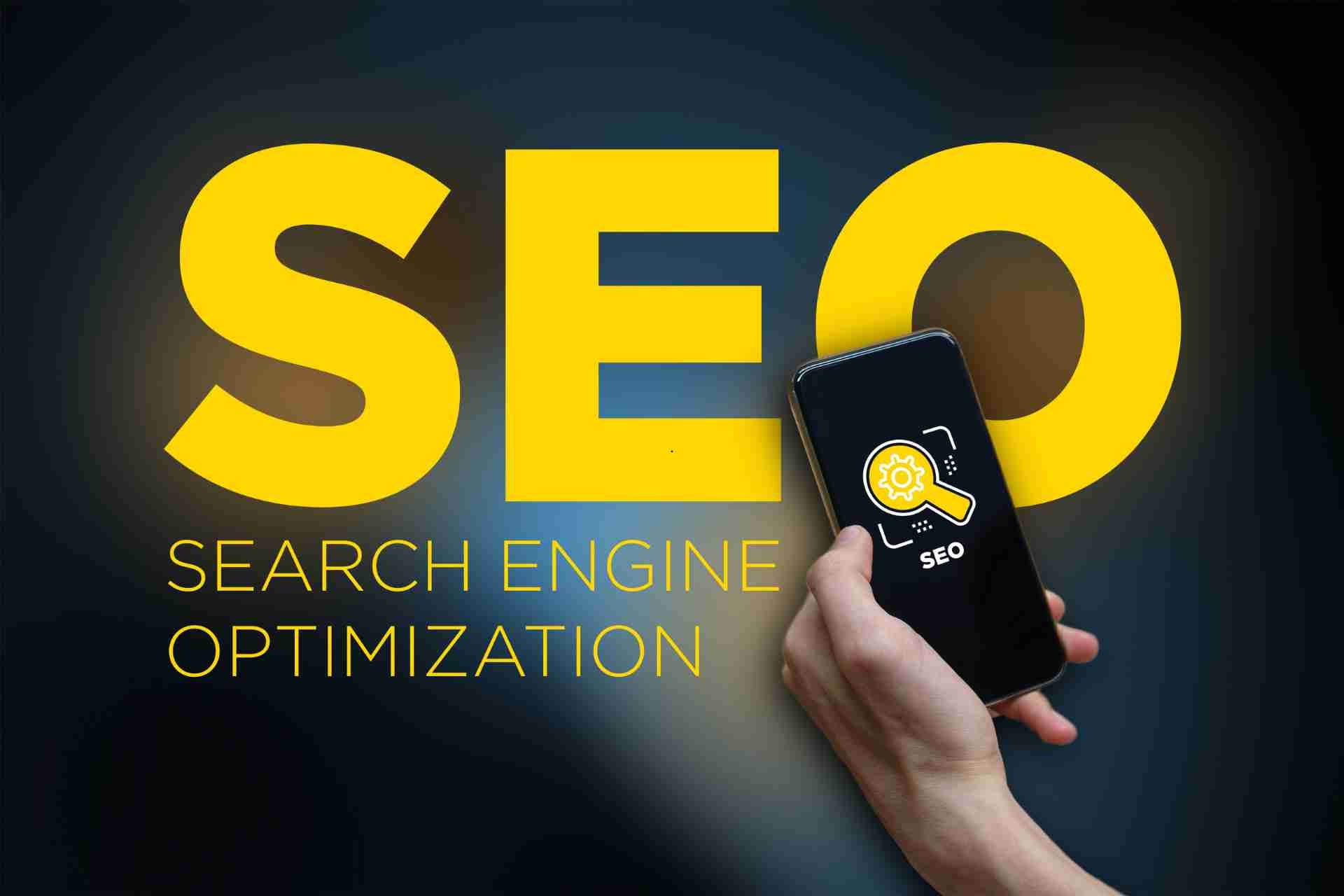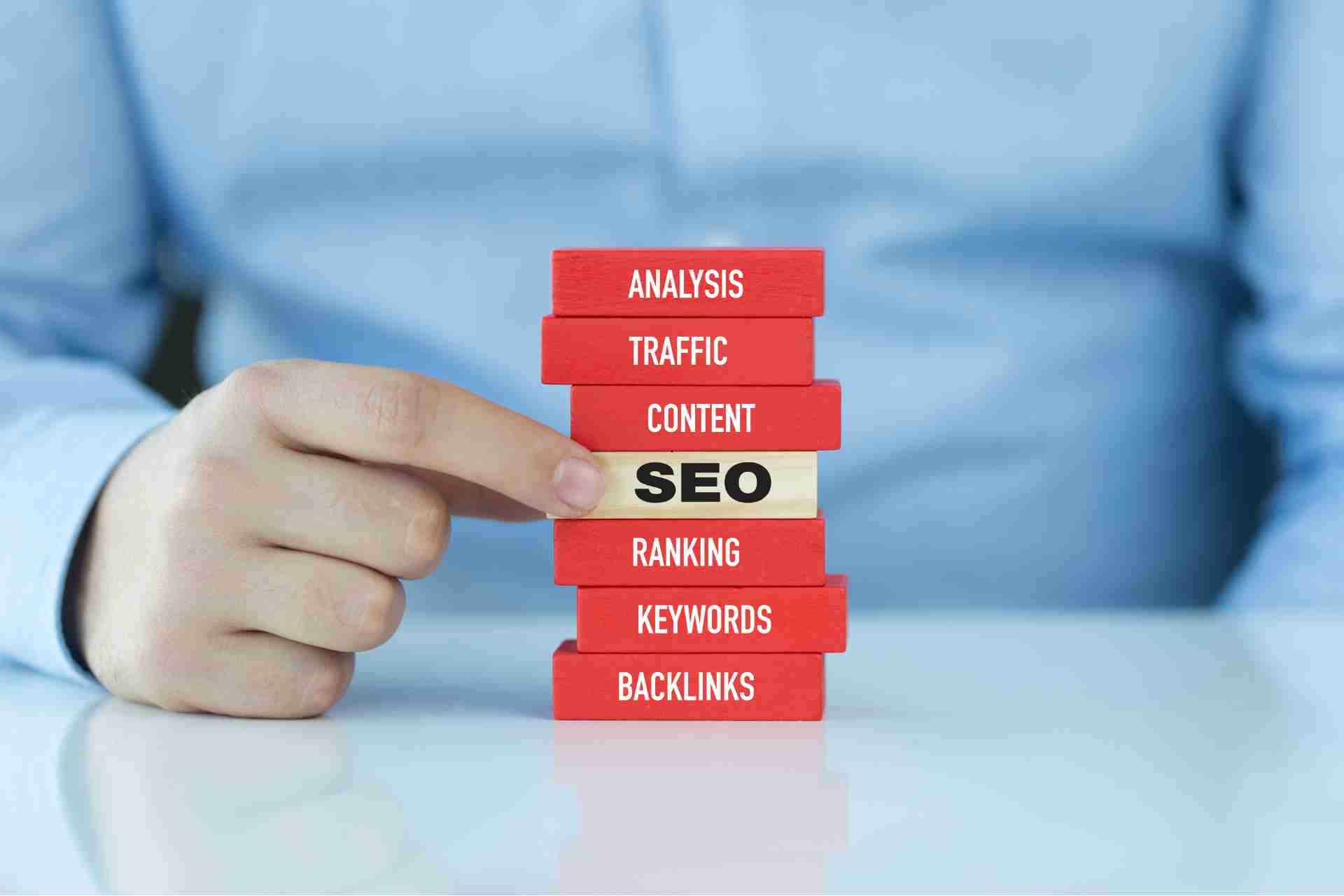Essential On page SEO Practices

On-page SEO refers to the optimization of individual web pages in order to rank higher on search engine results pages (SERPs) and attract more traffic.
Optimizing your website's on-page SEO is crucial for
improving your search engine rankings and driving more organic traffic to your site. On-page SEO are the elements on your website that you can control, such as content, meta tags, and internal linking. By implementing essential on-page SEO practices, you can increase your website's visibility, credibility, and user experience. Understand some key on page SEO practices that you should focus on to optimize your website for search engines.
What Makes On-Page SEO Important?
First and foremost, on-page SEO helps search engines understand the content of your website. By optimizing your content with relevant keywords, meta descriptions, and alt tags for images, you are providing search engines with the necessary information to index and rank your website properly. This, in turn, helps drive more organic traffic to your site.
Additionally, on-page SEO can also improve the user experience of your website visitors. By optimizing your content for keywords, you are making it easier for users to find the information they are looking for. This can lead to longer time spent on your website, lower bounce rates, and ultimately, more conversions.
On-page SEO also plays a crucial role in building your website's authority and credibility. When you consistently optimize your content and provide value to your audience, search engines are more likely to view your website as a trusted source of information. This can result in higher rankings and increased visibility in search engine results.
Furthermore, on-page SEO can also help you stay ahead of your competitors. By consistently optimizing your content and staying up-to-date with the latest SEO trends, you can outrank your competitors in search engine results and attract more organic traffic to your website.
Elements of On page SEO
1. Title tags: These are the HTML elements that specify the title of a web page. They should contain keywords relevant to the content of the page.
2.
Meta description: This is a brief summary of the content of a web page that appears in search engine results. It should be compelling and include relevant keywords.
3.
Heading tags: These are HTML tags (H1, H2, etc.) that organize the content on a web page. They should include relevant keywords to improve search engine visibility.
4.
Keyword optimization: This involves including relevant keywords throughout the content of a web page to help search engines understand what the page is about.
5.
Image optimization: This involves optimizing images on a web page by including relevant keywords in the image file names and alt text.
6.
URL structure: The URL of a web page should be structured in a way that is user-friendly and includes relevant keywords.
7.
Internal linking: This involves linking to other pages on your website to improve navigation and help search engines crawl your site more effectively.
8.
Content quality: High-quality, relevant, and valuable content is essential for on-page SEO. Content should be engaging, readable, and optimized for keywords.
9.
Mobile optimization: With the increasing number of users accessing websites on mobile devices, it is important to ensure that your website is mobile-friendly for better SEO performance.
10.
Page speed: A fast-loading website is crucial for both user experience and SEO. Optimizing images, reducing server response time, and utilizing browser caching are some ways to improve page speed.
11.
Schema markup: Implementing structured data markup to provide search engines with more information about your content and improve visibility in search results.
Essential On page SEO Practices
Search Engine Optimization (SEO) is crucial for any website looking to gain visibility and attract visitors. One of the key components of SEO is on-page optimization, which involves optimizing individual web pages to rank higher and earn more relevant traffic in search engines. By implementing essential on-page SEO practices, website owners can improve their search rankings and ultimately drive more organic traffic to their site.
Keyword research
Keyword research is a crucial aspect of on-page SEO practice. It involves identifying and targeting specific keywords or phrases that users are searching for on search engines. By conducting thorough keyword research, you can optimize your website's content to target these keywords, ultimately driving more relevant traffic to your site.
Keyword research helps you understand what your target audience is searching for, what terms they are using, and how competitive these keywords are. This information can help you create high-quality, engaging content that is tailored to your audience's needs and preferences.
Additionally, incorporating relevant keywords into your website's content, meta tags, headings, and URLs can improve your site's visibility and ranking on search engine results pages (SERPs). By optimizing your content around targeted keywords, you can increase your website's chances of ranking higher and attracting more organic traffic.
Optimize meta tags
Optimizing meta tags is an important on-page SEO practice that can help improve a website's visibility in search engine results.
There are several key meta tags that website owners should focus on optimizing:
Meta title tag: The meta title tag is one of the most important meta tags for SEO. It should accurately and concisely describe the content of the webpage, and include relevant keywords that users might search for. The meta title tag appears as the clickable link in search engine results, so it's crucial to make it compelling and relevant to attract clicks.
Meta description tag: The meta description tag provides a brief summary of the webpage's content. It appears below the meta title tag in search engine results, and can greatly influence a user's decision to click through to a webpage. Like the meta title tag, the meta description should be descriptive, engaging, and include relevant keywords.
Meta keywords tag: While the meta keywords tag used to be important for SEO in the past, search engines now largely ignore it. However, some smaller search engines still use it, so it doesn't hurt to include relevant keywords in this tag. Just don't prioritize it over the meta title and description tags.
Meta robots tag: The meta robots tag tells search engines whether to index a webpage or follow its links. By default, most web pages are set to be indexed, but you can use this tag to prevent search engines from indexing certain pages or following certain links.
To optimize meta tags for SEO, website owners should ensure that they are unique for each page, include relevant keywords, and accurately describe the content of the webpage. It's also important to keep meta tags concise and engaging to encourage users to click through to the webpage.
Create high-quality
Content is king in the world of SEO, and search engines like Google prioritize websites that provide valuable, relevant, and authoritative information to their users. This means you should focus on writing high-quality, well-researched content that is valuable to your target audience.
Use internal linking
Internal linking is an important on-page SEO practice that involves linking to other pages within your website. It helps search engines understand the structure of your website and the relationships between different pages, ultimately improving your site's visibility and search engine rankings.
Here are some tips for effectively using internal linking as an on-page SEO practice:
Use descriptive anchor text: When creating internal links, use relevant and descriptive keywords as anchor text. This not only helps users understand where the link will take them, but also helps search engines understand the context of the linked page.
Link to relevant pages: Make sure to only link to pages that are relevant to the content of the page you are linking from. This helps search engines understand the topic of your website and improves the overall user experience.
Use a logical linking structure: Organize your internal links in a logical manner, creating a hierarchy that helps users navigate your website easily. This can include linking to related pages, category pages, or important pages like your homepage or contact page.
Avoid excessive linking: While internal linking is important for SEO, it's important not to overdo it. Too many links can confuse users and dilute the authority of your important pages. Aim for a natural and relevant linking structure.
Update and monitor your links: Regularly review and update your internal links to ensure they are still relevant and functioning correctly. Monitor your website for broken links and fix them promptly to maintain a positive user experience.
Optimize images
When it comes to SEO, images are more than just eye candy. Search engines like Google rely on alt text, file names, and other metadata to understand the content of an image. By optimizing your images, you improve your chances of ranking higher in search engine results pages (SERPs) for relevant keywords.
Optimized images can improve the user experience on your website by reducing load times and enhancing accessibility for visually impaired users. This can lead to lower bounce rates and higher engagement metrics, both of which can positively impact your site's SEO performance.
Best practices for optimizing images for SEO:
Use descriptive file names: When saving images for your website, avoid generic file names like "image123.jpg." Instead, use descriptive filenames that include relevant keywords related to the content of the image. For example, if you're adding a picture of a red dress, a file name like "red-dress.jpg" would be more SEO-friendly.
Write informative alt text: Alt text, also known as alt attributes, provide a textual description of an image for screen readers and search engines. Ensure your alt text accurately reflects the content of the image and includes relevant keywords where appropriate. Avoid keyword stuffing or using alt text for decorative images.
Compress images for faster load times: Large image files can slow down website load times, which can negatively impact your SEO performance. Use image compression tools to reduce file sizes without sacrificing quality. Aim for a balance between file size and image clarity to optimize load times.
Add image captions and titles: Including captions and titles with your images can provide additional context and improve user engagement. Use captions to describe the image or provide extra information, and use titles to add a hover-over text that appears when users hover over the image.
Use responsive images for mobile optimization: With the increasing use of mobile devices, it's essential to ensure your images are optimized for various screen sizes. Use responsive design techniques to adjust image sizes and resolutions based on the device being used, improving the overall user experience and SEO performance.
Improve page speed
Page speed is a ranking factor for Google, meaning that faster-loading websites are more likely to rank higher in search engine results. So, if you want to improve your website's SEO, focusing on page speed is crucial.
There are several ways you can improve your page speed as part of your on-page SEO practices. Here are some key tips to keep in mind:
Optimize images: Large, uncompressed images can significantly slow down your website's loading time. Make sure to resize and compress your images before uploading them to your website. You can also use lazy loading techniques to only load images when they come into view, reducing initial load times.
Minimize HTTP requests: Every element on your website, such as images, CSS files, and JavaScript files, requires an HTTP request to load. The more elements on your page, the more HTTP requests are needed, which can slow down your website. Minimize the number of elements on your page to improve loading times.
Enable browser caching: Browser caching allows your website to store certain elements locally on a visitor's device, so they don't have to be reloaded every time someone visits your website. This can help speed up loading times for returning visitors.
Reduce server response time: If your server takes too long to respond to a request, it can slow down your website's loading time. Ensure that your server is optimized for speed by using a reliable hosting provider and minimizing server response times.
Use a content delivery network (CDN): A CDN distributes your website's content across multiple servers located in different geographic locations. This can help reduce latency and speed up loading times for users around the world.
Mobile Optimization
Mobile optimization involves optimizing your website's content, layout, and performance to provide a seamless experience for mobile users. This includes making sure your website loads quickly, is easy to navigate on a smaller screen, and displays properly on various devices and screen sizes.
One of the key aspects of mobile optimization is ensuring your website is responsive. This means that your website's design and content adjust automatically to fit the screen it is being viewed on. A responsive website ensures that mobile users have a consistent and user-friendly experience, regardless of the device they are using.
Secure website
Implement HTTPS: The first step in ensuring your website is secure is to implement HTTPS. This protocol encrypts the data that is sent between your website and your visitors, making it much more difficult for hackers to intercept and steal sensitive information. Not only does this help protect your customers, but Google also gives preference to websites that use HTTPS in its search results.
Keep your software up to date: Hackers are constantly looking for vulnerabilities in software to exploit, so it's important to keep your website's software up to date. This includes not only your
content management system (CMS) like WordPress, but also any plugins or themes you may be using. By regularly updating your software, you can help prevent security breaches and maintain a secure website.
Use strong passwords: One of the simplest ways to protect your website is by using strong passwords for your admin accounts. Avoid using common passwords like "123456" or "password" and instead opt for a combination of letters, numbers, and special characters. Additionally, consider using a password manager to securely store and generate complex passwords for your accounts.
Secure your website with an SSL certificate: Another important aspect of website security is having an SSL certificate. This certificate not only encrypts data transmitted between your website and users but also displays a padlock icon in the browser address bar, indicating to visitors that your site is secure. This can go a long way in building trust with your audience and improving your search engine ranking.
Create SEO-friendly URL Structure
To successfully optimize your website for search engines, one essential aspect to consider is creating an SEO-friendly URL structure. The URL of a webpage is one of the first things that search engines look at to determine the relevance and credibility of the content on that page. Therefore, it is crucial to ensure that your URLs are structured in a way that makes it easy for search engines to understand and index your content.
Implement Structured Data Markup
Structured data markup is a powerful tool that can greatly improve a website's search engine optimization (SEO) performance. By implementing structured data markup, website owners can provide search engines with additional information about their content, which can help improve visibility in search results and drive more traffic to their site.
Structured data markup is a form of metadata that can be added to the HTML code of a website. This markup helps search engines understand the content of a page more effectively, allowing them to better interpret and display the information in search results.
Monitor and analyze
Use tools like Google Analytics and Google Search Console to monitor your website's performance and make data-driven decisions for further optimization.
Conclusion
On-page SEO is a crucial aspect of any digital marketing strategy, as it plays a significant role in boosting your website's visibility and ranking on search engine result pages. By implementing the essential on-page SEO practices mentioned above, you can improve your website's overall performance and increase its chances of appearing higher in search results.






